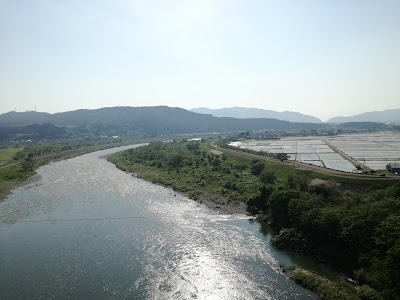The hydrograph above shows the recession of snowmelt runoff during the second half of May. The diurnal melt pattern has mostly gone by 24 May, and the subsequent peaks are due to rainfall (51mm rainfall over 26-27 May at Miomote Amedas station). A discharge measurement confirmed no change in the stage-rating curve, which has remained stable for nearly three years now.
| Stage = 0.45m, Discharge = 1.18m3/s, Specific discharge = 0.0607 m3/s/km2 |





